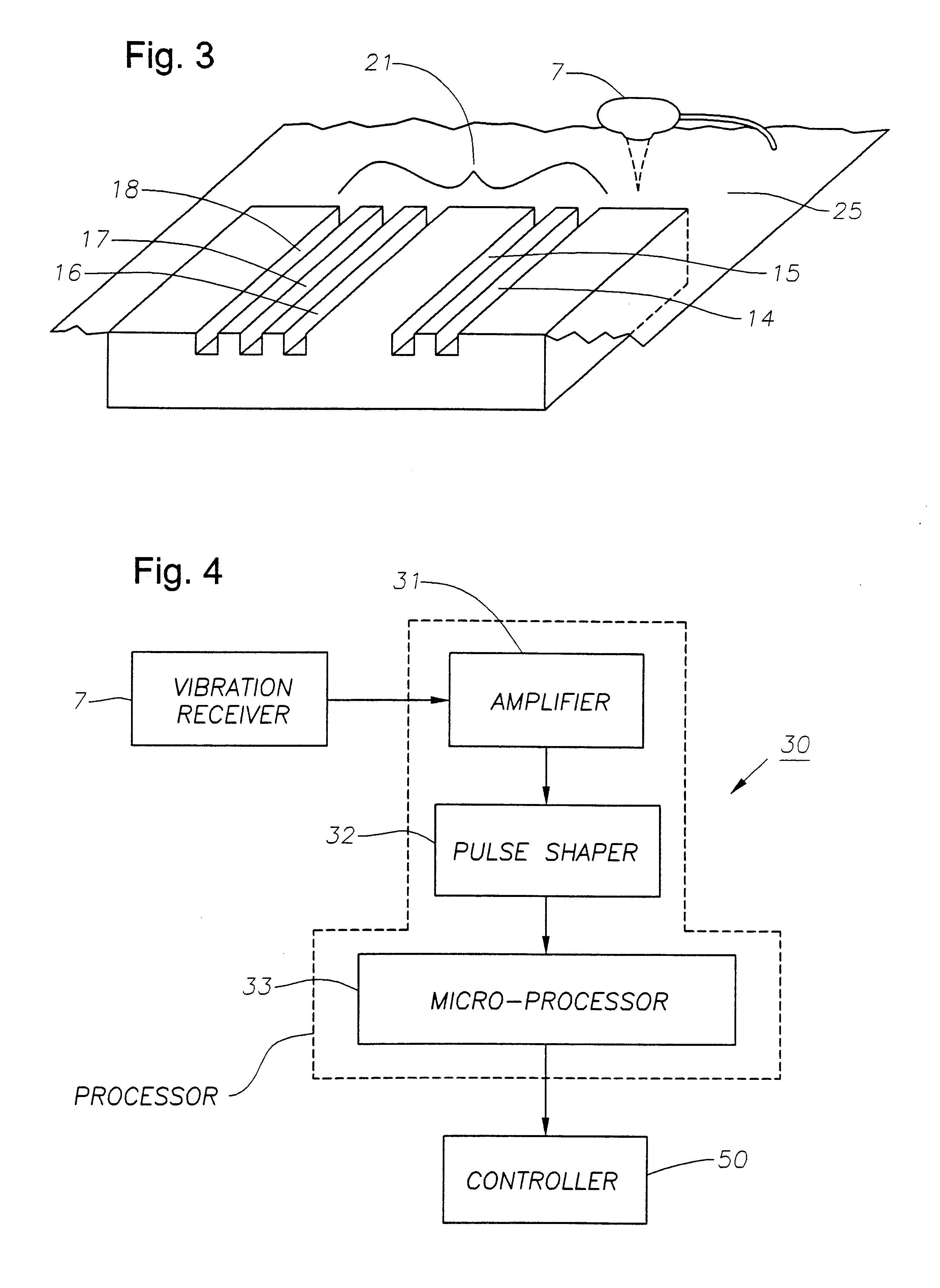Vibration actuated traffic monitoring system
a technology of vibration-actuated traffic and monitoring system, which is applied in the direction of traffic movement detection, traffic signal control, instruments, etc., can solve the problems of high cost and inconvenience, high cost and cost prohibitive to install such a system at an intersection, and achieve easy and inexpensive implementation, installation and movement, and promotion of lane discrimination and recognition
- Summary
- Abstract
- Description
- Claims
- Application Information
AI Technical Summary
Benefits of technology
Problems solved by technology
Method used
Image
Examples
Embodiment Construction
Specific embodiments of the invention will now be described as part of the detailed description. In the drawings, like elements have the same reference numbers for purposes of simplicity. It is understood that the invention is not limited to the specific examples and embodiments, including those shown in the drawings, which are intended only to assist a person skilled in the art in practicing the invention. Many modifications and improvements may be made without departing from the scope of the invention, which should be determined based on the claims below, including any equivalents thereof.
In a broad aspect, this invention relates to traffic monitoring. In a specific embodiment, the invention is directed to a method and apparatus for accurately controlling a traffic light 10 at traffic intersection 4, preferably upon receipt or recognition of a pattern of vibrations produced by the passing of vehicle 3 over a vibration generator 2, as shown in FIG. 1. The pattern of vibrations corr...
PUM
 Login to View More
Login to View More Abstract
Description
Claims
Application Information
 Login to View More
Login to View More - R&D
- Intellectual Property
- Life Sciences
- Materials
- Tech Scout
- Unparalleled Data Quality
- Higher Quality Content
- 60% Fewer Hallucinations
Browse by: Latest US Patents, China's latest patents, Technical Efficacy Thesaurus, Application Domain, Technology Topic, Popular Technical Reports.
© 2025 PatSnap. All rights reserved.Legal|Privacy policy|Modern Slavery Act Transparency Statement|Sitemap|About US| Contact US: help@patsnap.com



